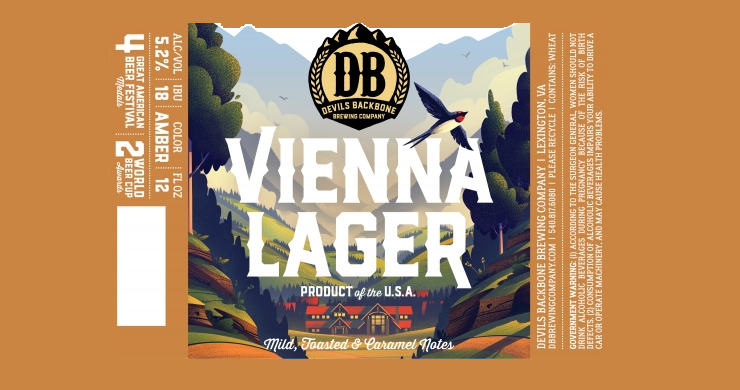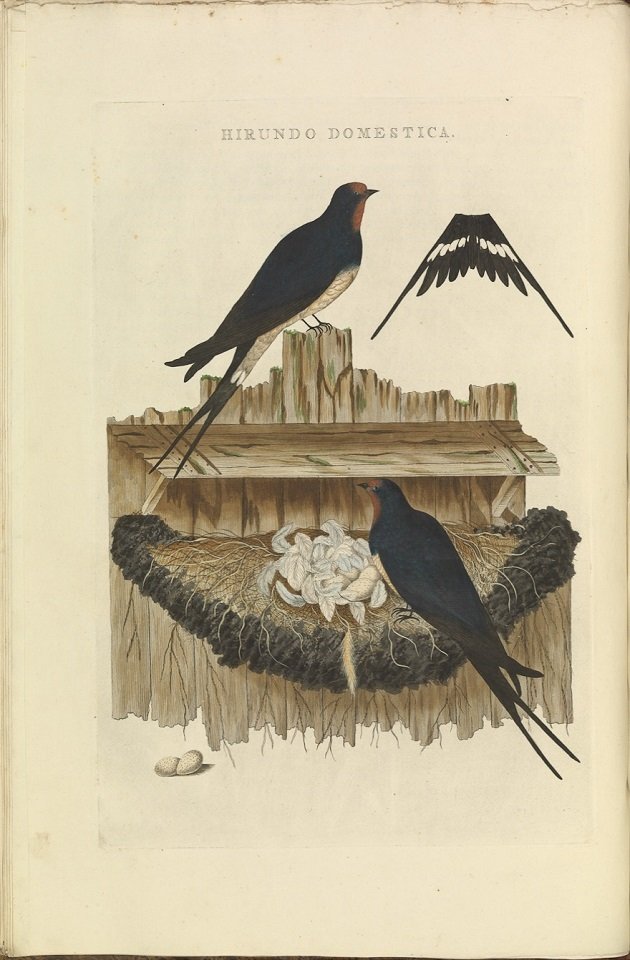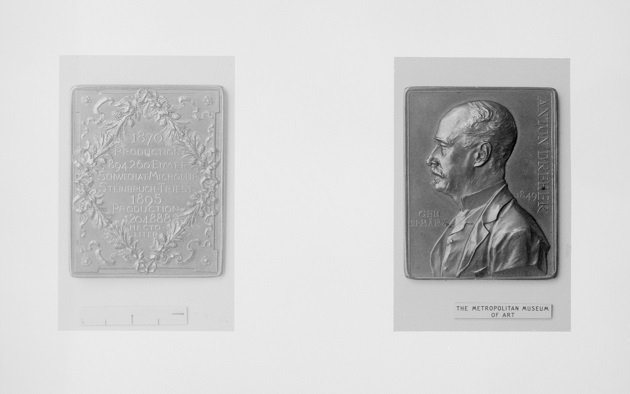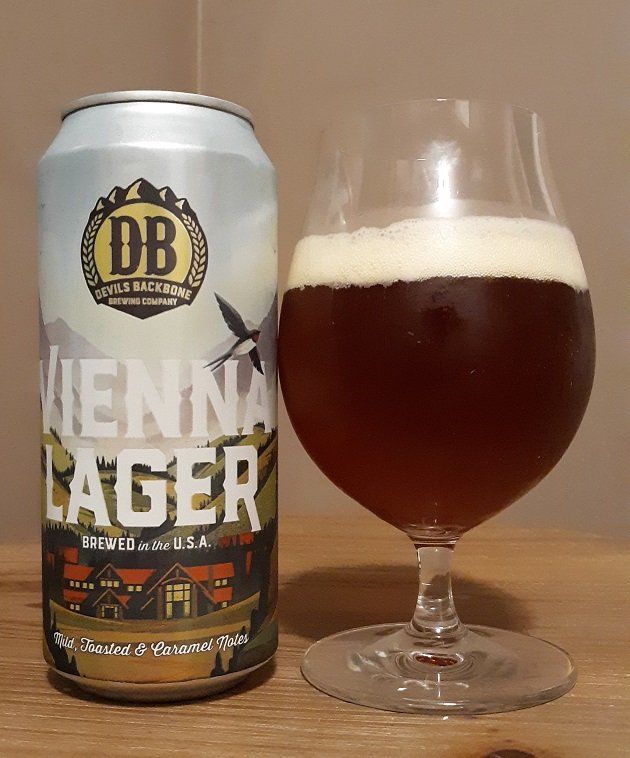
I thought we had bid farewell to Barn Swallows (Hirundo rustica) for the year with last week’s post, but we’ll have them back one last time before we get any further into autumn. They’ve graced us with appearance on this week’s featured beer, a Vienna lager by the Devils Backbone Brewing Company of Lexington, Virginia – and this style is such a perfect beer for fall it’d be a shame not to see them once more before they disappear for good until next spring.

Vienna lager isn’t the most well-known beer in today’s market – even in its namesake city – but the style does occupy an important place in the history of brewing. Fittingly, this revolutionary style is a product of Europe’s Age of Revolutions, being first introduced by the Austrian brewer Anton Dreher in 1841, at the beginning of what was perhaps the most tumultuous decade of the European nineteenth century. At the time, Dreher’s family owned the greatest brewing empire in the Austro-Hungarian Empire and in the 1830s, young Anton embarked on a “Grand Tour” of sorts befitting a promising young brewery heir. He traveled across Europe, visiting great brewing centers like Munich, London, and Scotland, diligently studying the latest in brewing industry developments, particularly in Industrial Age Britain, where brewing technologies and methods had notably outpaced those found on the Continent. Dreher’s education included a visit to the massive London brewery Barclay Perkins – at the time, the largest brewery in the world – and he even admitted to pilfering yeast from breweries in the great West Midlands brewing city of Burton-on-Trent.

Barn Swallows from Nederlandsche vogelen by Cornelius Nozeman (1720-1786) and Christiaan Sepp (c. 1710/12-1775).
The key ingredient in what would become Dreher’s Vienna lager was pale malt, a British innovation achieved by drying malt in coke-fired hot air kilns, which could be used to produce much lighter and cleaner-tasting grains than malt dried over traditional wood fires or direct-fired kilns. With this novel ingredient, English and Scottish brewers had been pioneering lighter beer styles like India pale ale as early as the eighteenth century, but darker brown beers remained the staple in the German-speaking lands of Dreher’s time.
Dreher’s great stroke of brilliance was to marry new industrial British malting methods with the traditional cold fermentation and long maturation – known as lagering – of his homeland, producing a clean-tasting, amber beer that was lighter than anything else being brewed in Austria and Bavaria at the time. Marketed as Vienna lager, Dreher’s beer became an international success, much copied by other European breweries and exported to the Americas by German emigration. Its legacy persists in the darker lagers of Mexico like Dos Equis, Negra Modela, and Bohemia, and in the United States, Vienna lager inspired both the flagship product of the country’s oldest continuously-operating brewery, D.G. Yuengling & Son of Pottsville, Pennsylvania, as well as the latter-day craft beer forerunner, Samuel Adams Boston Lager from the Boston Brewing Company. Vienna lager brewed to even higher strength came to be known as Oktoberfest (or Märzen) and was for many years the most popular beer associated with that annual festival in Munich.

Perhaps a footnote in brewing history now, Anton Dreher was an illustrious personage in his own time: this bronze portrait of the brewer by the Austrian medalist and engraver Anton Scharff (1806-1855) is in the collection of the Metropolitan Museum of Art, New York.
Following Dreher’s example, beers in central Europe became even paler, most notably with the crystal-clear, golden Pilsner style introduced by Bavarian brewer Josef Groll just a year later in 1842, which would become a sensation in its own right. Vienna lager remained popular through the rest of the century, but eventually, Dreher’s death, the collapse of the Empire, and the privations of two world wars led to an inevitable decline in the style’s fortunes. But Vienna lager has since been revived, beginning in the 1970s with American homebrewers and later by commercial craft breweries they inspired. And while hoppy ales have been the mainstay of craft brewing for decades now, a renewed interest in lagers in recent years has brought Vienna lager back to the forefront. Its deceptively simple and straightforward recipe, with little in the way of brash flavors to mask any technical errors by the brewer, has cemented Vienna lager’s reputation as a real “brewer’s beer”, a test of the beer maker’s art requiring a restrained hand and harmonious blend of simple ingredients to make well.
And it’s difficult to think of a cozier, more inviting beer for autumn than a crisp, malty pour of Vienna lager. This interpretation by Devils Backbone glows copper and amber in the glass, and its soft, bready malt bouquet is accented with notes of sweet almond, toffee, and a delicate hop spiciness. The palate is robust but smooth, layered with toasted malt, caramel, and brown bread flavors, and a subtle hint of cherries. A graceful, balancing bitterness and a long, dry finish keep this otherwise sweet and warming Vienna lager brisk and lean – the perfect beer for watching the colorful, falling leaves toss about in a cool autumn breeze.

Good birding and happy drinking!
Devils Backbone Brewing Company Vienna Lager

Four out of five feathers (Excellent)











Leave a Comment